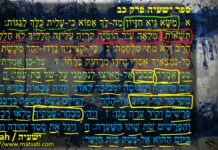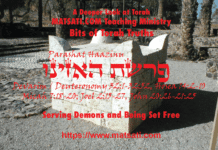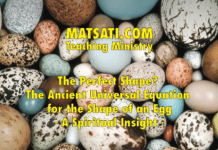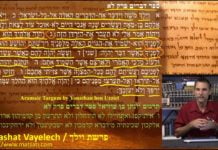In this week’s reading, Parashat Tetzave (Shemot / Exodus 27:20-30:10) details the construction of the priestly garments (ב וְעָשִֹיתָ בִגְדֵי-קֹדֶשׁ לְאַהֲרֹן אָחִיךָ לְכָבוֹד וּלְתִפְאָרֶ: ‘28:2 You shall make holy garments for Aaron your brother, for glory and for beauty. (NASB)) Aharon’s garments are said to consecrate him for the purpose of ministering before the Lord (28:3). The garments consist of the breast-piece, the ephod, a robe, a turban, and a sash (28:4). Garments are made for Aharon and for his sons of gold, blue, purple, scarlet materials and fine linen. The ephod was constructed of these materials indicating that the ephod is a woven piece of work. It is constructed of two pieces which is connected on the ends (28:6). Two onyx stones contain the engraving of the names of the tribes of Yisrael (28:9), six names on each stone. The breast-piece is called the breast-piece of judgment (28:15) whose construction is of the same materials as the ephod. Twelve precious stones are set in the breast-piece one for each of the tribes of Yisrael (28:17-22). The breast-piece is bound to the ephod. The Urim and Thummim are placed in the breast-piece so that Aharon carries them before the Lord over his heart continually. The hem of the garment is to be constructed with woven pomegranates made of blue, purple, and scarlet material (28:34) and a golden bell is spaced in every-other position along the hem (i.e. in bell-pomegranate-bell-pomegranate fashion). The sound of the bell will be made when Aharon enters into the Kedosh Kedoshim (holy of holies) so that he will not die (28:35). There is also a golden plate engraved as a seal that is holy to the Lord fastened to the front of the turban. A blue cord is to be fashioned and fastened to Aharon’s forehead for the purpose of taking away the iniquity of the holy things. (לח וְהָיָה עַל-מֵצַח אַהֲרֹן וְנָשָֹא אַהֲרֹן אֶת-עֲוֹן הַקֳּדָשִׁים אֲשֶׁר יַקְדִּישׁוּ בְּנֵי יִשְֹרָאֵל לְכָל-מַתְּנֹת קָדְשֵׁיהֶם וְהָיָה עַל-מִצְחוֹ תָּמִיד לְרָצוֹן לָהֶם לִפְנֵי יְהוָֹה:) The tunic is woven in a checkered fashion and Moshe instructs the people to also make sashes and caps for Aharon and his sons. The text then describes how God tells Moshe to consecrate Aharon and his sons as priests. Take a bull and two rams without blemish (29:1), unleavened bread and unleavened cakes mixed with oil and unleavened wafers spread with oil all made of wheat flour. These are presented together before the Lord. The text describes that Moshe is to bring Aharon and his sons to the entrance to the tent of meeting (29:4), dress them with the garments (29:5-6), and anoint them with oil (29:7), this being the process of ordination before God (29:9). The bull and two rams are slaughtered, the one ram is offered as a whole burnt offering, the second ram, the blood is used to anoint Aharon and his sons, and the blood of the bull is placed upon the altar that is before God. The breast of the ram of their ordination, and the bread is made to be a wave offering before the Lord (29:26-28). Additionally, two lambs are to be offered on the altar daily as a continual burnt offering before the Lord throughout their generations (29:42). The Lord says He will consecrate the tent of meeting, the altar, and the sons of Aharon as priests and then says מה וְשָׁכַנְתִּי בְּתוֹךְ בְּנֵי יִשְֹרָאֵל וְהָיִיתִי לָהֶם לֵאלֹהִים: “I will dwell among the sons of Yisrael and will be their God.” Read More here.








